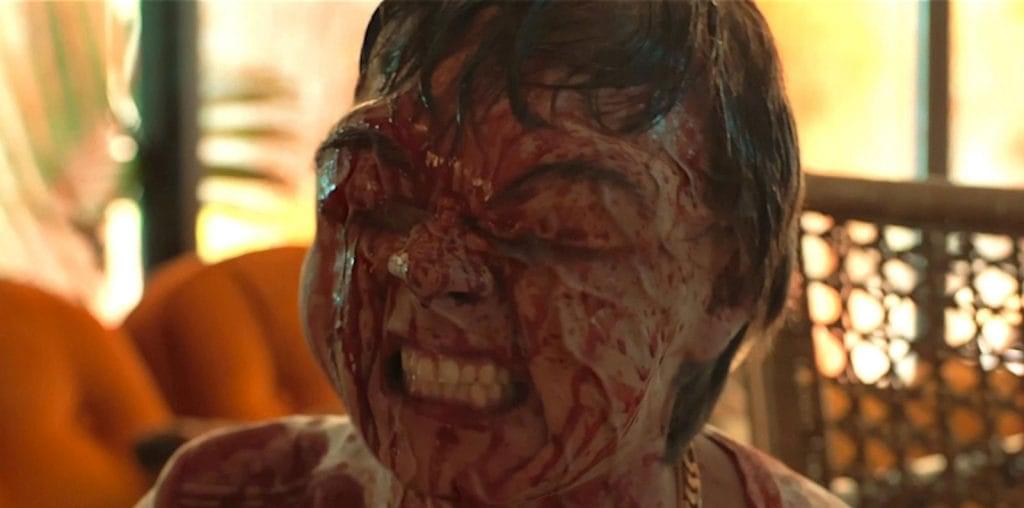
The story of Jesus really is the greatest ever told. It’s got it all: A protagonist who’s handsome (Jesus is always good-looking), imbued with superpowers and a genius; who’s misunderstood, castigated, murdered and then vindicated in literature’s most gratifying final act. That’s why it keeps getting made into movies and why people keep buying tickets to see them even though they go in already knowing every detail of the story.
I’ve never met a Jesus movie I didn’t like. Until now. With “The Passion of the Christ,” Mel Gibson may have given us the most profitable version of this story ever made, but he’s also given us the most amateurish, absurd, politically suspect and obsessively violent.
Because the director has chosen to all but ignore Jesus’ life and focus on his death, Jim Caviezel is largely a Christ without context, a body to be whipped and flayed for two hours. From the moment of his arrest early in the film to the point when he gives up the holy ghost, Gibson’s Jesus is a virtually mute object of relentless abuse. The only thing which comes close to interesting the filmmaker as much as depicting Christ’s agony, it would seem, is pointing his finger at the parties who inflicted it.
The point is moot, one would think, given that Jesus was on a mission from God. Nonetheless, Gibson lays responsibility at the feet of two earthly groups-Jewish elders who accuse Christ of blasphemy (but seem more concerned about preserving the status quo of their power structure and avoiding a mob uprising) and the low ranking soldiers who carry out orders Pontius Pilate is pressured by similar concerns into giving. Both groups are rendered as ludicrously, almost cartoonishly exaggerated caricatures. When the high priest Caiaphas (Mattia Sbragia) demands that the Roman governor issue a sentence of crucifixion, you half expect him to twirl his mustache. Likewise, the hooting, booze-swilling centurions who torture Jesus before whipping him all the way to Golgotha are straight out of a bad gladiator movie.
The picture’s clunkiness extends as well to overacting on the part of certain disciples, an overwrought, intrusive score by John Debney and Gibson’s direction which, ironically, is uninspired. There are Hong Kong action films which make more artistic use of slow motion.
Gibson appears to have reserved his energies for the picture’s stomach-turning reenactments of violence. Of the film’s 126 minutes, close to 100 have to have been devoted to the brutality inflicted on Christ in his final hours. He’s stripped, spat upon, punched, kicked and whipped. His flesh is shredded when guards flagellate him with metal-tipped devices. One eye is swollen shut like a boxer’s. His brow is pierced deeply by thorns. His mouth is filled with blood. He’s punched, kicked and spat upon some more. As he’s lashed to his cross, his shoulder is separated before his hands and feet have spikes hammered through them. In the history of cinema there has never been a more graphic or protracted extravaganza of gore.
Gibson’s point? He claims he wanted to remind viewers of the flesh and blood sacrifice Christ made for their sins. If that’s the case, his film is a success. No one who watches the systematic destruction of this Jesus is likely to forget it.
By virtually any other standard, however, “The Passion of the Christ” is a picture of extremely limited distinction, one which views a pivotal moment in history with a tunnel vision that leaves key points unexplained and contradictions unresolved, a rehash of the New Testament which fails to tell anyone anything new.
While it fails to shed significant new light on its subject, Gibson’s film and the all-Jesus-all-the-time attention from the media it’s attracted do tell us something somewhat disconcerting about the state of American culture: That the way to make a religion based on love and forgiveness relevant today is to turn it into violent entertainment.
Disagree with this review? Think you can write a better one? Go right ahead in Film Threat’s BACK TALK section! Click here>>>
